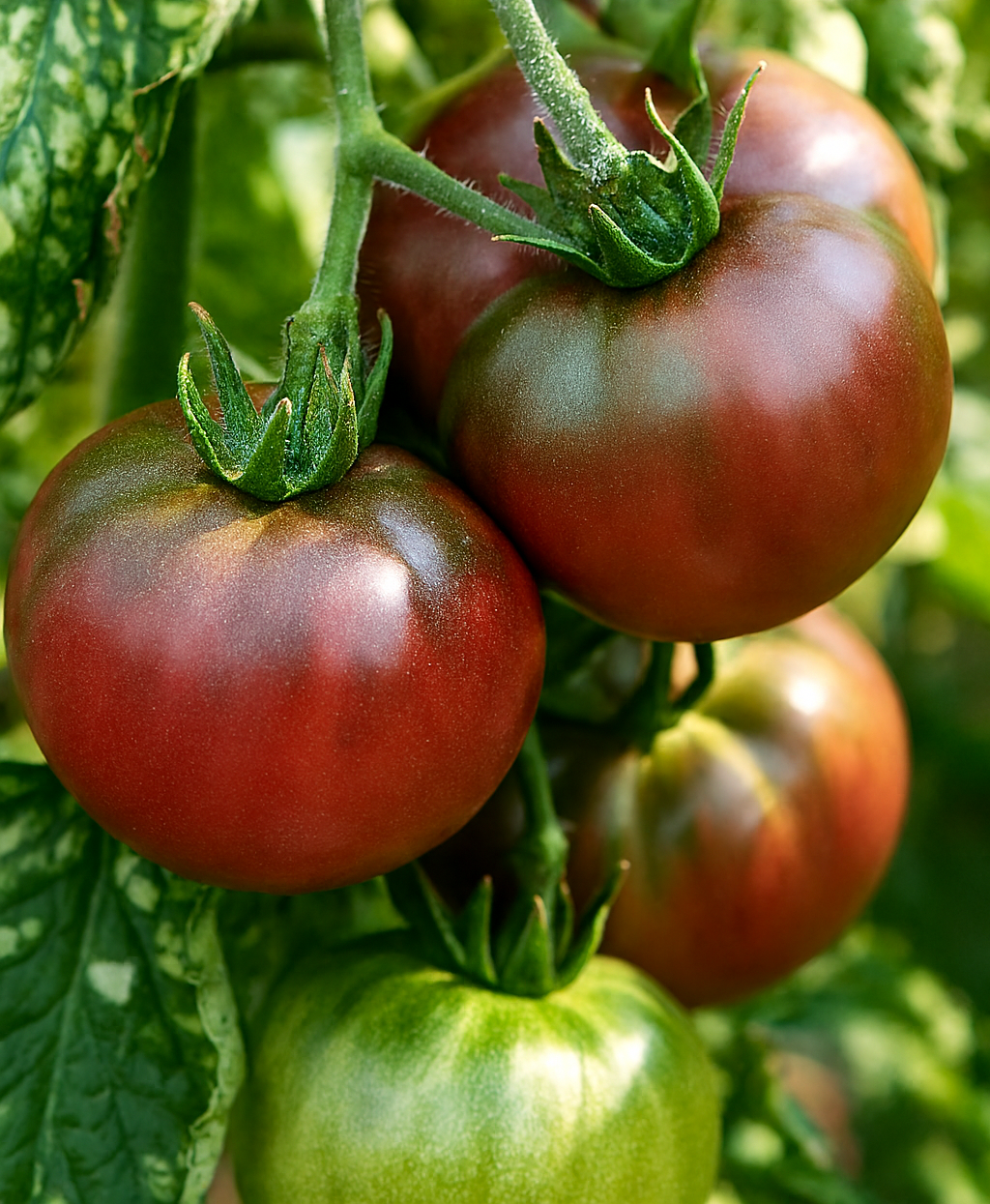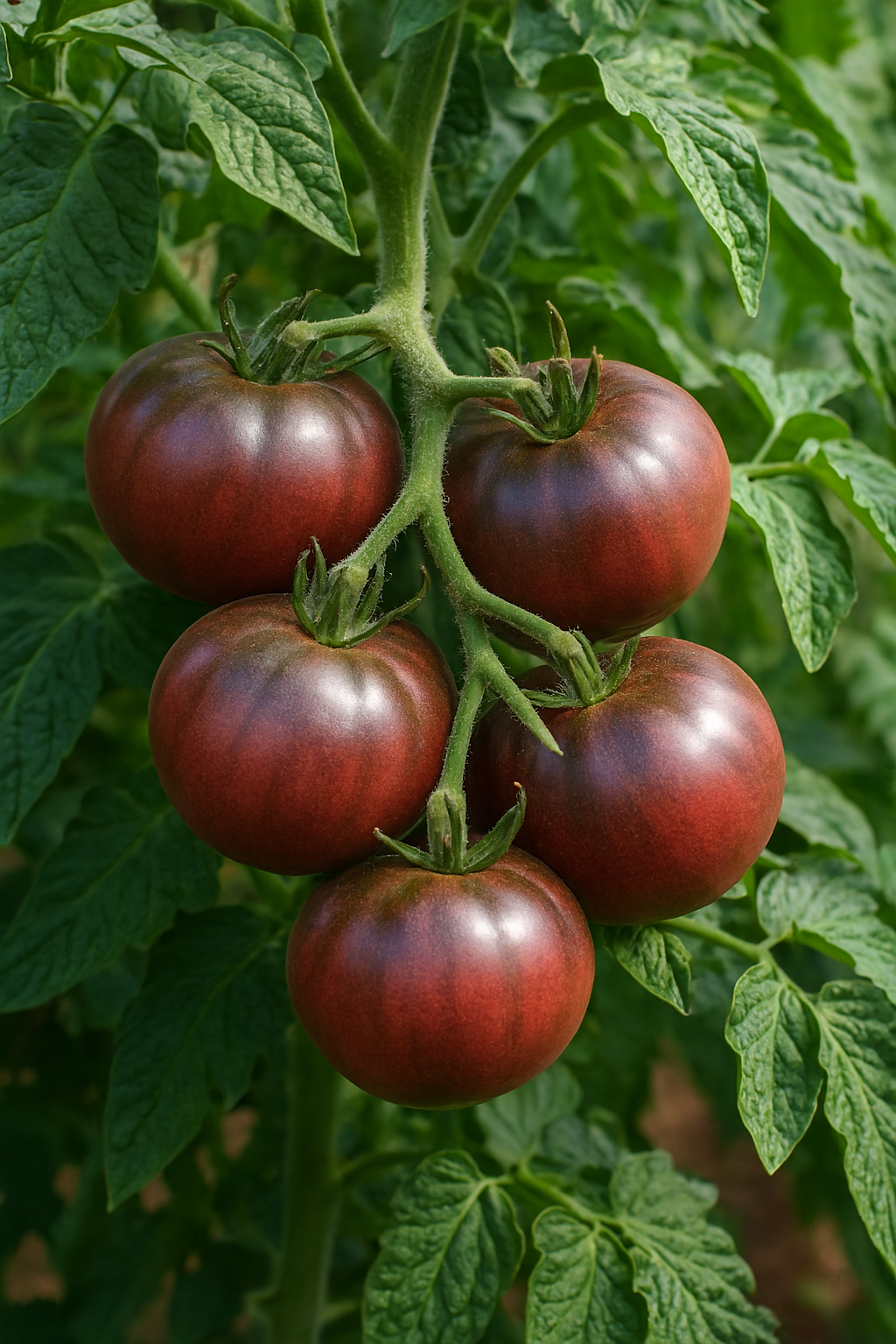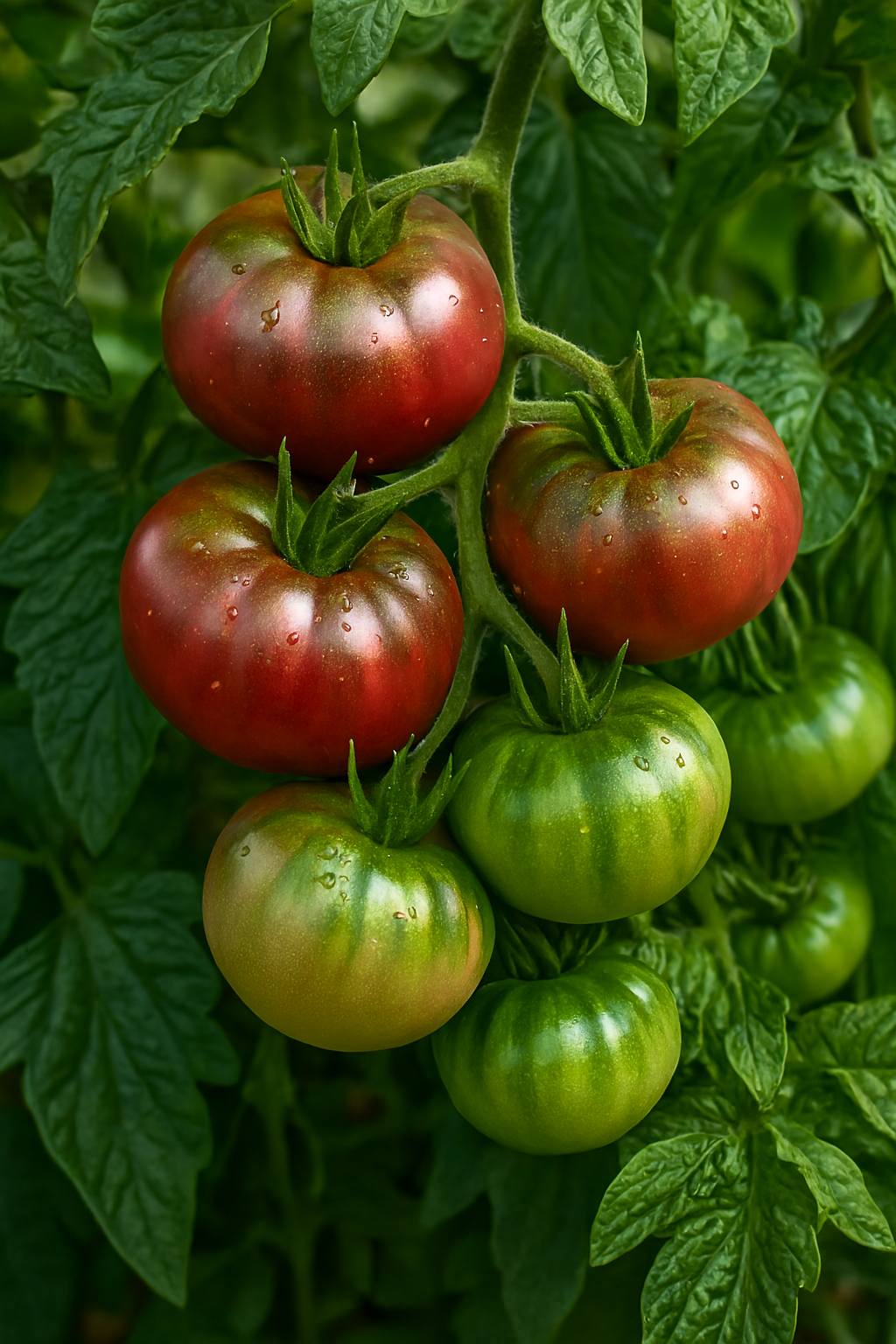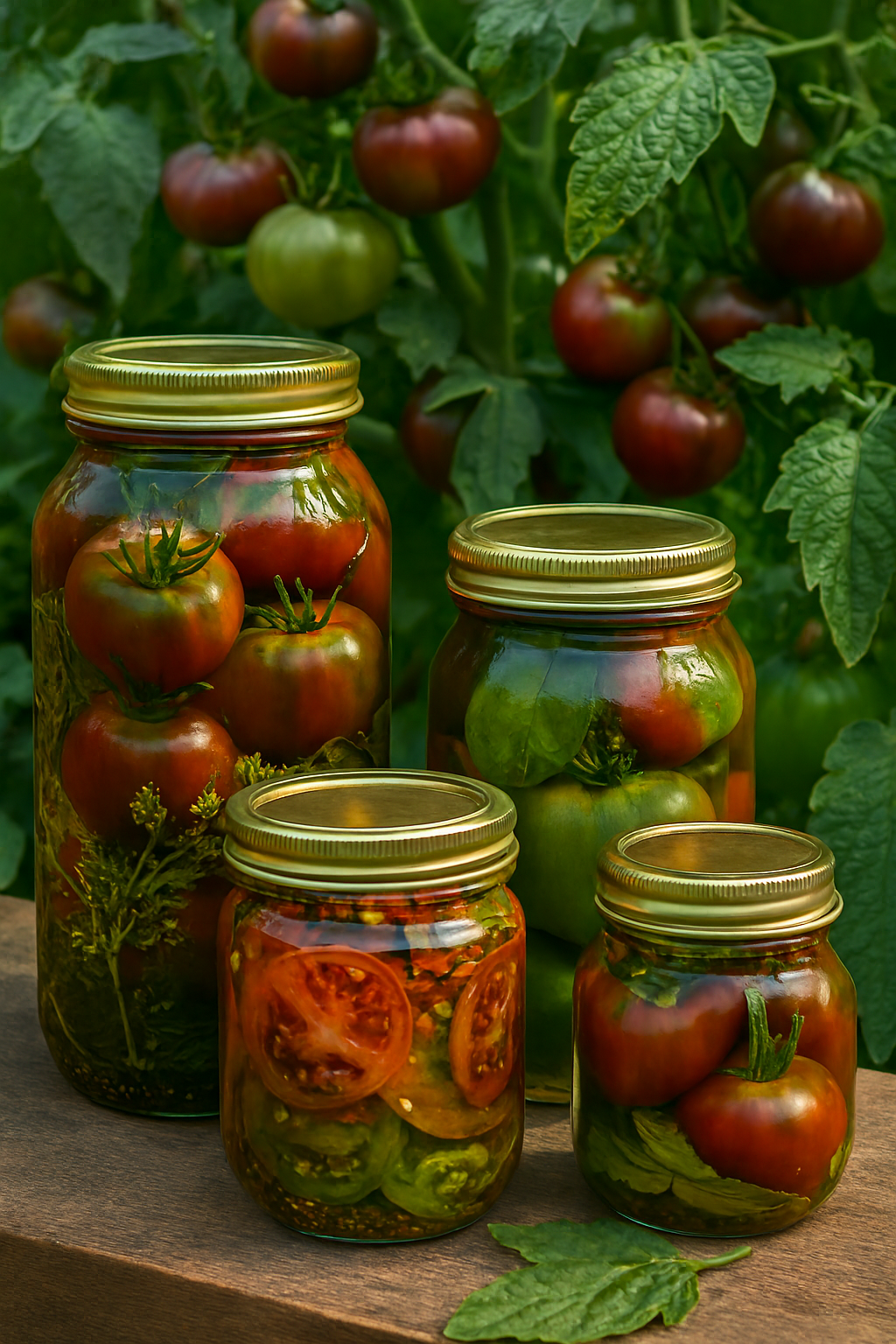Cherokee Purple tomatoes are more than just a crop—they’re a story, a flavor, and a gardener’s reward. Known for their dusky purple‑red skin, green shoulders, and smoky‑sweet taste, these heirloom beauties demand patience and attention.
Harvesting them at the right time is the difference between bland and unforgettable.
Go through this guide to know how to recognize ripeness, avoid common mistakes, and make the most of your harvest.
The Heritage of Cherokee Purple Tomatoes
Table of Contents

Cherokee Purple tomatoes trace their roots back to seeds shared by the Cherokee people. Unlike modern hybrids bred for uniformity, these heirlooms ripen unevenly, with green shoulders and deep purple‑red bodies.
Their flavor is often described as rich, sweet, and smoky, making them a favorite among chefs and home gardeners alike.
Understanding their heritage helps explain why harvest timing is so important: these tomatoes weren’t bred for supermarket shelves, but for taste and tradition. If you want to ripen your green tomatoes then, here is a complete guide.
Why Harvest Timing Matters
Picking Cherokee Purple tomatoes at the right moment ensures:
Peak flavor: Smoky, sweet, and tangy notes develop fully only when ripe.
Best texture: Firm yet juicy, perfect for slicing.
Reduced risk: Overripe fruits attract pests and split after rain.
Longer shelf life: Properly timed harvests store better.
Signs of Ripeness

Color Transformation
– Starts green → shifts to reddish‑purple with green shoulders.
– Mature fruits often look dusky, almost mahogany.
Firmness Test
– Gently squeeze: ripe fruits are firm but slightly yielding.
– Rock‑hard = underripe; mushy = overripe.
Days to Maturity
– Cherokee Purple tomatoes ripen about 80–85 days after transplanting.
Stem and Cap Check
– The stem area loosens slightly when ready.
– Caps may curl back.
Taste Test
– If unsure, pick one and sample—it should taste sweet, tangy, and smoky.
External Factors That Influence Harvest
Determining when Cherokee Purple tomatoes are ready to harvest requires more than just a glance. These heirloom fruits show several distinct cues that guide you to the perfect picking time.
– Weather: Hot, humid climates accelerate ripening but increase cracking risk.
– Rainfall: Heavy rain after dry spells causes splitting—pick just before storms.
– Pests: Birds and insects love ripe tomatoes; harvest promptly.
– Sunlight: Uneven exposure can cause patchy ripening.
Common Mistakes to Avoid
Even experienced gardeners can misjudge Cherokee Purple tomatoes because of their unusual ripening patterns. Recognizing these common errors helps you avoid bland flavors, mushy textures, and lost harvests.
– Waiting for uniform red: Cherokee Purples keep green shoulders even when ripe.
– Picking too early: Leads to bland flavor.
– Waiting too long: Results in mushy texture and pest damage.
– Ignoring weather cues: Rain can ruin a perfect tomato overnight.
Step‑by‑Step Harvest Guide

Harvesting Cherokee Purple tomatoes requires care to preserve both flavor and fruit quality. Following a simple daily routine ensures you pick them at their peak without damaging the plant.
– Inspect plants daily once fruits start turning purple‑red.
– Gently squeeze for firmness.
– Twist or cut the stem cleanly to avoid damage.
– Place harvested tomatoes in a single‑layer basket.
– Store in a cool, shaded area until use.
Storage Tips

How you store Cherokee Purple tomatoes makes a big difference in flavor and longevity. Choosing the right method ensures they stay fresh without losing their signature taste.
• Room temperature: Best until fully ripe.
• Refrigeration: Extends shelf life but dulls flavor—bring back to room temp before eating.
• Avoid stacking: Prevents bruising.
• Ripening indoors: If picked slightly early, leave on a counter to finish.
Culinary Uses
Cherokee Purple tomatoes are prized not only for their appearance but also for their rich, smoky flavor. They elevate everyday dishes and add depth to both fresh and cooked recipes.
• Sandwiches & Burgers: Large slices add juiciness and color.
• Salads: Their smoky flavor elevates simple greens.
• Caprese Variations: Pair beautifully with mozzarella and basil.
• Roasting & Sauces: Deepens their natural sweetness.
• Salsas: Adds complexity compared to standard reds.
Troubleshooting Harvest Issues

Even with careful tending, heirloom tomatoes can face challenges during ripening. Knowing the common problems and quick fixes helps you save your harvest. You can follow this guide to know the signs of tomatoes getting spoiled.
• Cracking: Caused by sudden rain—harvest early if storms are forecast.
• Blossom End Rot: Pick affected fruits early; use unaffected portions.
• Uneven Ripening: Normal for heirlooms; focus on overall color and feel.
• Sunscald: White patches from too much sun—harvest and use quickly.
When you’re trying to decide whether a Cherokee Purple tomato is ready to pick, the first thing to look for is color. These heirlooms don’t ripen into a uniform red like many hybrids. Instead, they develop a dusky purple‑red tone with green shoulders that remain even at maturity. Once you see that deep, almost mahogany shade, it’s a strong signal that the tomato is ready for harvest.
Next, check the firmness. A ripe Cherokee Purple should feel firm but yield slightly when pressed. If the fruit is still rock‑hard, it needs more time on the vine. If it feels mushy, it has gone past its prime. This gentle squeeze test is one of the most reliable ways to confirm ripeness.
Timing also plays a role. These tomatoes typically reach maturity about 80 to 85 days after transplanting. Once you’re in that window, daily inspection becomes important. The stem area often loosens slightly when the fruit is ready, and the cap may begin to curl back. These subtle cues help you know it’s time to harvest.
Finally, there’s the taste test. If you’re uncertain, pick one and slice it open. A ripe Cherokee Purple will deliver its signature flavor: sweet, tangy, and smoky, with a richness that sets it apart from other varieties. That taste is the ultimate confirmation that you’ve harvested at the right moment.
Wrapping Up
Cherokee Purple tomatoes are heirloom treasures that reward careful observation. By watching for color changes, firmness, and timing around 80–85 days, you’ll enjoy their legendary flavor at its peak.
Whether sliced into a summer sandwich or roasted into a smoky sauce, harvesting at the right moment makes all the difference.
Leave a Reply